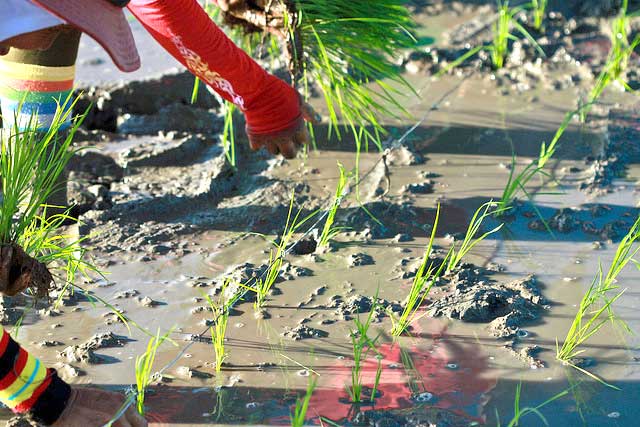How to plant rice
 Rice crops can be either direct seeded or transplanted.
Rice crops can be either direct seeded or transplanted.
In direct seeding, seeds are sown directly in the field. While in transplanting, seedlings are first raised in seedbeds before they are planted in the field.
When choosing the suitable planting method, the (1) locality, (2) type of soil, (3) rice ecosystem, and (4) availability of inputs and labor, should be considered.
Choosing when to plant is crucial to establishing the crop in the field. Timely planting into a well prepared seedbed will help produce a fast growing, uniform crop that will have higher yields and better competition against weeds and other pests. The best time to plant depends on locality, variety, weather, water availability, and the best harvest time. Planting at the same time (or within a 2 week window) as the neighboring fields can help to minimize insect, disease, bird, and rat pressure on individual fields.
Direct seeding requires 60−80 kg of seeds per ha, while transplanting only requires 40 kg per ha, at 2 plants per hill.
 Snail management is critical during the first 10 days of transplanted crops, and first 21 days of direct seeded crops.
Snail management is critical during the first 10 days of transplanted crops, and first 21 days of direct seeded crops.
Golden apple snails eat young and emerging rice plants. They cut the rice stem at the base, destroying the whole plant.
The number of plants established and its seedling vigor will affect the competitiveness of the crop against weeds, and determine the final yield potential.


